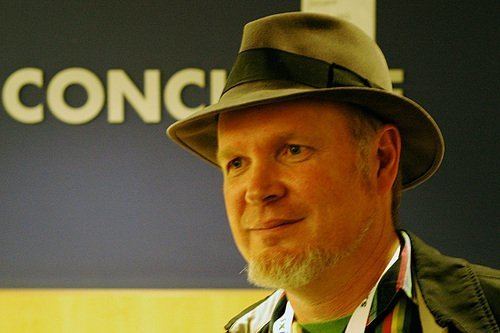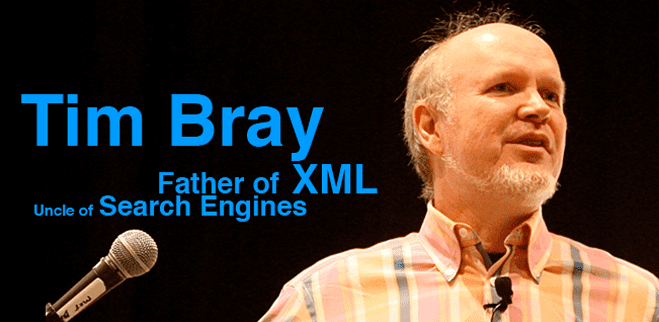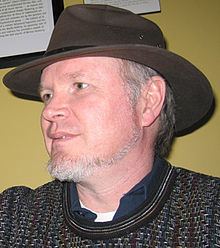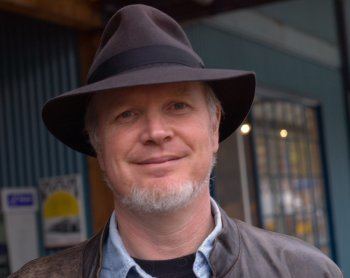Spouse(s) Lauren Wood Website www.tbray.org/ongoing | Name Tim Bray Organizations founded OpenText Role Author | |
 | ||
Full Name Timothy William Bray Born June 21, 1955 (age 70) ( 1955-06-21 ) Employer Digital Equipment CorporationUniversity of WaterlooWaterloo MapleOpen Text CorporationAntarctica SystemsWorld Wide Web Consortium (W3C)Sun MicrosystemsGoogleCentre for Digital MediaAmazon.com Known for Web standardsCo-author of XML specification Similar People Jean Paoli, Bryan Cantrill, Jonathan I Schwartz, Tim Berners‑Lee, Elliotte Rusty Harold | ||
Goto 2014 does the browser have a future tim bray
Timothy William Bray (born June 21, 1955) is a Canadian software developer and entrepreneur and one of the co-authors of the original XML specification. He has worked for Amazon Web Services since December 2014 and previously for Google, Sun Microsystems, the Digital Equipment Corporation (DEC) and several start-ups.
Contents
- Goto 2014 does the browser have a future tim bray
- Goto 2014 interview with tim bray erik doernenburg martin fowler
- Education and early life
- Career
- Waterloo Maple
- Open Text Corporation
- Textuality
- Antarctica Systems
- Web standards
- XML
- W3C TAG
- Atom
- JSON
- Software
- References

Goto 2014 interview with tim bray erik doernenburg martin fowler
Education and early life

Bray was born on June 21, 1955 in Alberta, Canada. He grew up in Beirut, Lebanon and returned to Canada to attend school at the University of Guelph in Guelph, Ontario. He graduated in 1981 with a Bachelor of Science, double majoring in Mathematics and Computer Science (in 2009, he would return to Guelph to receive an honorary Doctor of Science degree). Tim described his switch of focus from Math to Computer Science this way: "In math I’d worked like a dog for my Cs, but in CS I worked much less for As—and learned that you got paid well for doing it."
Career

Fresh out of university, Bray joined Digital Equipment Corporation (DEC) in Toronto as a software specialist. In 1983, Bray left DEC for Microtel Pacific Research. He joined the New Oxford English Dictionary (OED) project at the University of Waterloo in 1987 as its manager. It was during this time Bray worked with SGML, a technology that would later become central to both Open Text Corporation and his XML and Atom standardization work. Bray co-founded Antarctica Systems. Bray was director of Web Technologies at Sun Microsystems from early 2004 to early 2010. He joined Google as a developer advocate in 2010, focusing on Android and then on Identity. He left Google in March 2014, unwilling to relocate to Silicon Valley from Vancouver. He started working for Amazon Web Services in December 2014. Bray has been involved in several entrepreneurial activities including:
Waterloo Maple

Tim Bray served as the part-time CEO of Waterloo Maple during 1989–1990. Waterloo Maple is the developer of the popular Maple mathematical software.
Open Text Corporation

Bray left the new OED project in 1989 to co-found Open Text Corporation with two colleagues. Open Text commercialised the search engine employed in the new OED project.
Bray recalled that “in 1994 I heard a conference speaker say that search engines would be big on the Internet, and in five seconds all the pieces just fell into place in my head. I realized that we could build such a thing with our technology.” Thus in 1995, Open Text released the Open Text Index, one of the first popular commercial web search engines. Open Text Corporation is now publicly traded on the Nasdaq under the symbol OTEX. From 1991 until 1996, Bray held the position of Senior Vice President—Technology.
Textuality
Bray, along with his wife Dr. Lauren Wood, ran Textuality, a successful consulting practice in the field of web and publishing technology. He was contracted by Netscape in 1999, along with Ramanathan V. Guha, in part to create a new version of Meta Content Framework called Resource Description Framework (RDF), which used the XML language.
Antarctica Systems
In 1999 he founded Antarctica Systems, a Vancouver, Canada-based company that specializes in visualization-based business analytics.
Web standards
Bray has contributed to several important standards in technology, particularly Web standards at the World Wide Web Consortium (W3C).
XML
As an Invited Expert at the World Wide Web Consortium between 1996 and 1999, Bray co-edited the XML and XML namespace specifications. Halfway through the project Bray accepted a consulting engagement with Netscape, provoking vociferous protests from Netscape competitor Microsoft (who had supported the initial moves to bring SGML to the web.) Bray was temporarily asked to resign the editorship. This led to intense dispute in the Working Group, eventually solved by the appointment of Microsoft's Jean Paoli as third co-editor.
In 2001, Bray wrote an article called Taxi to the Future for Xml.com which proposed a means to improve web client user experience and web server system performance via a Transform-Aggregate-send XML-Interact architecture—this proposed system is very similar to the Ajax paradigm, popularized in 2008 and 2009.
W3C TAG
Between 2001 and 2004 he served as a Tim Berners-Lee appointee to the W3C Technical Architecture Group.
Atom
Until October 2007, Bray was co-chairing, with Paul Hoffman, the Atom-focused Atompub Working Group of the Internet Engineering Task Force. Atom is a web syndication format developed to address perceived deficiencies with the RSS 2.0 format.
JSON
Bray worked with the IETF JSON Working Group in 2013 and 2014, serving as editor of RFC 7159, a specification of the JSON Data Interchange Format which revised RFC 4627 and highlighted interoperability best practices, released in March 2014.
Software
Bray has written many software applications, including Bonnie which was the inspiration for Bonnie++, a Unix file system benchmarking tool; Lark, the first XML processor; and APE, the Atom Protocol Exerciser.
